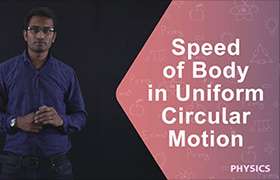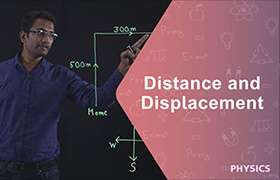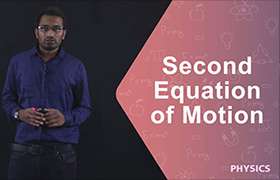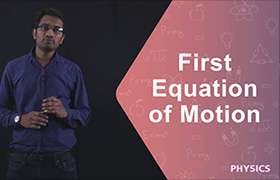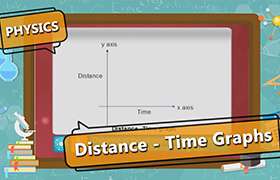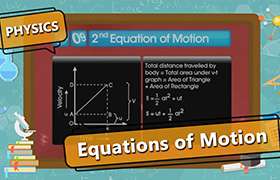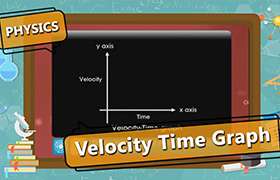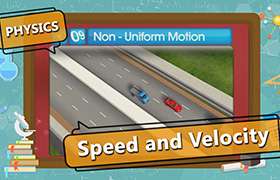CBSE Class 9 Answered
Derivation of Newton's equations of motion
Newton's equations of Motion are those three famous equations which are taught to every student of elementary Classical Mechanics. These equations are non-relativistic in nature i.e. they do not consider any relativistic effects like length contraction or the speed of the light barrier as these equations are based completely on the belief of absolute space. Nevertheless, these equations take into account the principle of Galilean Relativity that motion is relative.
Consider the definition of velocity. As we know, it is the rate of change of displacement i.e. velocity is the distance traveled per unit time. For ex: When we say that a car is traveling with a velocity of 80 km/hr what we actually mean is that the car is covering a distance of 80 km every hour. Note that here we assume that the velocity is uniform i.e. it remains 80 km/hr and doesn't change to any other value. Below is a car moving with a uniform velocity.
Thus. if x is the distance traveled by a body in a given time t, then the velocity v of the body is given by
v=x/t
Now we define acceleration as the rate of change of velocity i.e. the change in velocity itself per unit time. For example if a car is moving with a uniform velocity 80 km/hr and if in the next hour it's velocity becomes 100 km/hr, then we say that it has accelerated with an acceleration of 100-80 i.e. 20 km/hr. Note that the decrease in velocity is also an acceleration and is sometimes also called deceleration or retardation or negative acceleration. For ex: if the velocity of the car came down to 60 km/hr from 80 km/hr in one hour, then the acceleration of the car is said to be 60-80 i.e. -20 km/hr. The -ve sign indicates that the velocity of the car DECREASES by the given amount, every hour.
If u is the initial velocity of a moving body, and if the velocity of the body changes to v (which we shall call the final velocity) in a time interval t, then the acceleration of the body in the time t is given by
Note that in the above formula we assume that the acceleration of the body was uniform (i.e. the same) throughout the time interval t. Below is a car moving with a uniform acceleration.
Now, equation (0) can be re-written as
at = v-u
=> v-u = at
This is Newton's First equation of motion. As you can you see, we can use this equation to calculate the velocity of a body which underwent an acceleration of a m/s for a time period of t seconds, provided we know the initial velocity of the body. Initial velocity i.e. u is the velocity of the body just before the body started to accelerate i.e. the velocity at t=0.
In case, the body started to accelerate from rest then we can substitute the value of initial velocity to be u=0.
We sometimes also may want to find the total distance traveled by moving body.
A moving body might be either moving with a uniform velocity, or with a uniform acceleration or even with a non-uniform acceleration.
In case of a body moving with a uniform velocity v, it is quite simple to calculate the total distance s traveled by the body in a time t. we know that
velocity = distance traveled / time taken
v = s/t
=> s= vt
Thus, distance traveled = velocity x time
Now the situation is slightly different for a body moving with a uniform acceleration a. To calculate the distance traveled by an uniformly accelerating body, we derive the equation as follows.
If u is the initial velocity of an uniformly accelerating body and v is its velocity after a time t, then since the acceleration is UNIFORM, we can find the average velocity of the body as follows
average velocity = (u+v)/2
Now, the distance s, traveled in the time t by the body is given by
distance traveled = average velocity x time
s = [(u+v)/2]t
From equation (1) we have v=u+at, substituting this in the above equation for v, we get
s = [(u+u+at)/2]t
=> s = [(2u+at)/2]t
=> s = [(u + (1/2)at)]t
This is Newton's second equation of Motion. This equation can be used to calculate the distance traveled by a body moving with a uniform acceleration in a time t. Again here, if the body started from rest, then we shall substitute u=0 in this equation.
If you take a close look at the 2 equations of motion we derived just now you can observe that none of these equations carry a relation between distance traveled and final velocity of the body. All other relations are available. So, there is a need to find an equation which relates s and v. We derive it as follows.
We start with squaring equation (1). Thus we have
v2 = (u+at)2
=> v2 = u2 + a2t2 + 2uat
=> v2 = u2 + 2uat + a2t2
=> v2 = u2 + 2a(ut + (1/2)at2)
now, using equation 2 we have
=> v2 = u2 + 2as - (3)
As you can see, the above equation gives a relation between the final velocity v of the body and the distance s traveled by the body.
Thus, we have the the three Newton's equations of Motion as
1) v= u + at
2) s = ut + (1/2)at2
3) v2 = u2 + 2as

